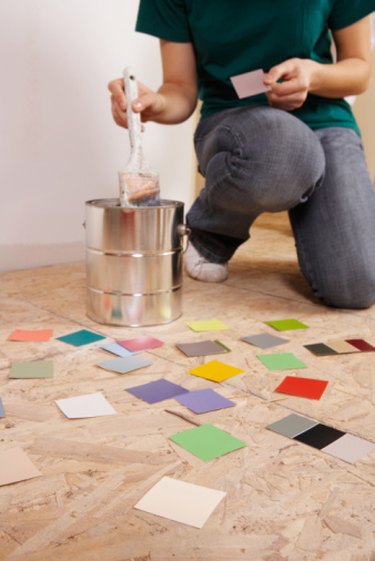Things You'll Need
220-grit sandpaper
Dish Soap
Water
Sponge
Paper towel
Bonding primer
Paintbrush
Latex or oil paint

Elastomeric paint, also called EWC paint, is great for porous surfaces because it expands and contracts easier than regular latex paint. As it applies, EWC paint fills cracks, leaving the final surface smooth, glossy and durable. While elastomeric paint provides good coverage, you'll quickly find it is more difficult to paint over. A dried elastomeric finish is very slick and doesn't accept new paint as easily as a regular latex or oil painted surface. Fortunately, there are steps you can take to paint over EWC surfaces with quality results.
Step 1
Sand the surface with 220-grit sandpaper. The trick to good adhesion is roughing up the smooth elastomeric finish. On a slick surface, paint tends to drip easier and provide only spotty coverage. Sandpaper helps make the surface more callous for easier painting.
Video of the Day
Step 2
Wipe the surface clean using dish soap, water and a sponge. Sandpaper dust and other debris will prevent good paint coverage if left uncleaned.
Step 3
Dry the surface with a paper towel.
Step 4
Apply bonding primer to the surface. Even after roughing up EWC paint with sandpaper, a bonding primer is ideal for lasting paint coverage.
Step 5
Wait for the primer to fully dry.
Step 6
Apply any regular latex or oil paint over the dried primer. With surface roughage and bonding primer, you should be able to paint over the elastomeric paint without any issues.
Step 7
Apply additional coats as necessary after the first coat dries.
Video of the Day